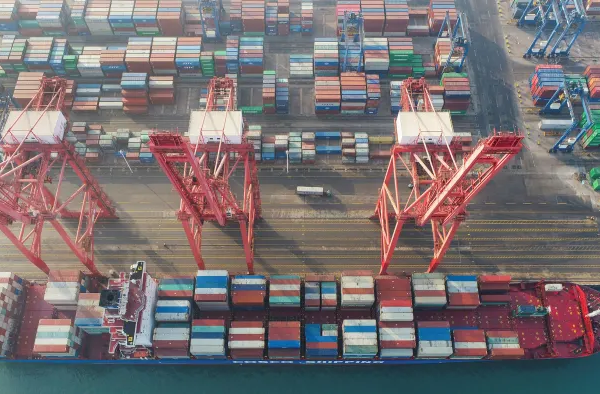Congestion at Asian container terminals continues to disrupt global shipping schedules, with quarantines and the ongoing effects of the Covid pandemic blamed for further instability in the supply chain.
The world’s largest operator of container vessels, Maersk, has updated its customers on the situation at the Chinese port of Yantian, away from where it had been obliged to divert over 80 of its own and partner vessels following a Covid outbreak there at the end of May. The carrier said this had impacted the schedules of its services, but that the current situation at the port was looking up and they are beginning to repatriate their services at the port. They added that container-yard density and overall productivity had improved at Yantian, with vessel waiting times for berths reduced to just half a day.
Maersk noted that quay congestion and vessel wait times at other main ports in the region had suffered from the knock-on effects of the vessel diversions, with for example Hong Kong reporting a yard density of 93% and a three-day wait for a berthing window.
Another issue of concern has been a global shortage of empty containers – most of which are produced in China. China claims it has taken significant steps to ease the impact of tight container shipping capacity by boosting the availability of empty boxes and raising production of new units.
China’s Ministry of Transport (MOT) says it is co-ordinating the shipping of goods needed for pandemic prevention and control. They note that, in the first five months of 2021, transpacific capacity totalled 5.51m TEU, an increase of 65% on the same period last year.
One obstacle they have to face in several provinces is that of severe power shortages. Guangdong province – a manufacturing centre responsible for US$2.2 trillion – or more than 10% of China’s annual economic output and a bigger share of its foreign trade – has been rationing power for over a month. The restrictions have forced companies across the province to shut down for a few days per week.
It’s not just Guangdong. At least nine provinces have said they are dealing with similar issues, including Yunnan, Guangxi and the manufacturing hub of Zhejiang, forcing regional authorities to announce power curbs across an area of China the size of the United Kingdom, Germany, France and Japan combined. Power shortages are likely to continue for at least the foreseeable short term, especially as demand stays high in the hot summer months. Some local authorities are warning that power rationing could last through the end of the year.
Adding to the pressure is the fact that Guangdong has already seen its incredibly busy container ports clogged by a COVID outbreak. The shipping backlog could take months to clear and lead to shortages during the year-end holiday shopping season.
For all these reasons, freight rates have spiralled on many shipping routes over the past few months, eating into the margins of many shippers, with the greatest impact often felt by smaller traders.
Colless Young continues to monitor the situation, with the aim of minimising the impact on our clients’ business. As licensed Customs Brokers and International Freight Forwarders, we take care of all your import and export cargo shipping needs. We are based in Brisbane and offer a complete range of logistics services, for both air and sea freight, including fumigation, warehousing and trucking – through all Australian ports and airports.

